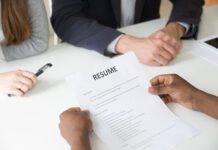5 tips for building (or rebuilding) your emergency savings
Planning for emergencies by building – or rebuilding if the COVID-19 pandemic required making a withdrawal – a savings account to withstand the unforeseen can increase confidence in your overall financial health and reduce worry that a significant life event will negatively impact your finances.
“Our research shows having emergency savings is the foundation for long-term financial health,” said Chandni Ohri, program lead in savings and financial health with BlackRock’s Emergency Savings Initiative. “The start of a new year is a good time to make a savings plan, which can consist of putting a little bit of money away regularly.”
Even before the pandemic began, 4 out of 10 Americans had a hard time finding even $400 to cover an emergency, according to a report from the United States Federal Reserve. However, if you don’t think you have money to save, consider the majority of people who were able to save for an emergency for the first time in 2020 earned less than $60,000, according to research from BlackRock’s Emergency Savings Initiative, a group of nonprofit experts, corporate partners, and providers. Changes in spending due to the pandemic plus government stimulus packages helped many individuals create much-needed cash buffers.
Consider these tips to build your emergency savings account and create a buffer of cash for when emergency strikes.
Start a Savings Habit
While it’s less important to have a specific dollar amount in mind, getting into the habit of putting some money in savings with each paycheck can help protect you should an emergency arise. While one good rule of thumb is to set aside enough to cover roughly six weeks of living expenses – housing, food, transportation – take a look at what it would cost to cover unexpected issues with your car, a trip to the hospital, a leak in your home or the replacement of a major appliance and start there.

Even a small amount, such as $50 in your savings account when it’s the day before payday and you’re running on fumes, can save you from an overdraft fee, having to resort to using a credit card, borrowing from a loved one or taking out a loan. However, research from the AARP Public Policy Institute found having a cash buffer of approximately $2,500 can help prevent financial hardship over the longer term. If you lose your job, for example, your emergency account could help pay for necessities while you find a new position, or the funds could supplement any unemployment benefits you may receive.
Automate Your Savings
Because an emergency can strike at any time, it’s important to have easy access to your funds. However, the account should also be separate from your checking account so you’re not tempted to dip into your reserves. Pick a free savings account with no minimum balance requirements and link it to your everyday account to quickly move money over if you need it.
Look for ways you can automatically save such as enabling roundups from your checking account to be transferred to your savings with each purchase or having your employer split your paycheck and automatically deposit a portion into savings each payday.
If you’re planning to stash funds away for months or years that can serve as both an emergency fund and long-term savings, consider a high-yield savings account.
Look for Ways to Cut Back
While you may have already made changes to your spending habits amid the pandemic, periodically shopping for competitive rates of recurring bills, such as cable and internet, cell phones insurance policies and other utilities, can be a simple way to save some money each month. Start by asking your current providers about any special rates and promotions that may be available to loyal customers then check with alternative providers to see if they can provide the same or better offerings at a reduced cost. Sometimes returning to your current provider with a more competitive rate from elsewhere can be extra incentive to work out a deal to keep a longtime customer.
Also look at any subscription services you use, or potentially don’t but still pay for, and see if they offer a cheaper plan that still meets your needs or if you’re able to cancel subscriptions you no longer use frequently. Other expenses such as dining out or buying new clothing and accessories could also be scaled back if you find you’re splurging too much. Avoid completely cutting spending for leisure activities from your budget but look for reasonable tweaks that can allow you to set more money aside for unforeseen expenses.
Take Advantage of One-Time Opportunities to Save
Assuming you expect to receive a tax refund, this provides an easy way to boost your emergency fund if circumstances allow you to save all or a portion of the return. If you’re able, consider having your refund directly deposited in your emergency account. The same strategies can be applied to any government aid checks you may receive, such as a second round of stimulus money that could be distributed to eligible citizens in 2021 to help reinvigorate the economy amid the COVID-19 pandemic.
There may also be other times throughout the year when you receive one or more cash gifts, like your birthday or holidays, that can help provide a nice cushion to your emergency fund if you can avoid the temptation to spend it.
Replenish What You Use
Remember to review and adjust your savings plan as needed, whether you’re able to contribute over a longer period of time without dipping into the account or if an expensive life event pops up that requires using all or a portion of the funds.
Should you need to dip into the savings, do your best to make replenishing the account to a level you’re comfortable with a primary goal in case any additional unexpected expenses arise. Alternatively, if your saving is going well, consider increasing the amount you’re saving each paycheck so you’re better protected against any major life changes or able to finance a large-scale purchase down the road.
Find more information and tips for building your savings at savingsproject.org.
Photos courtesy of Getty Images
SOURCE:
Financial Health Network



































